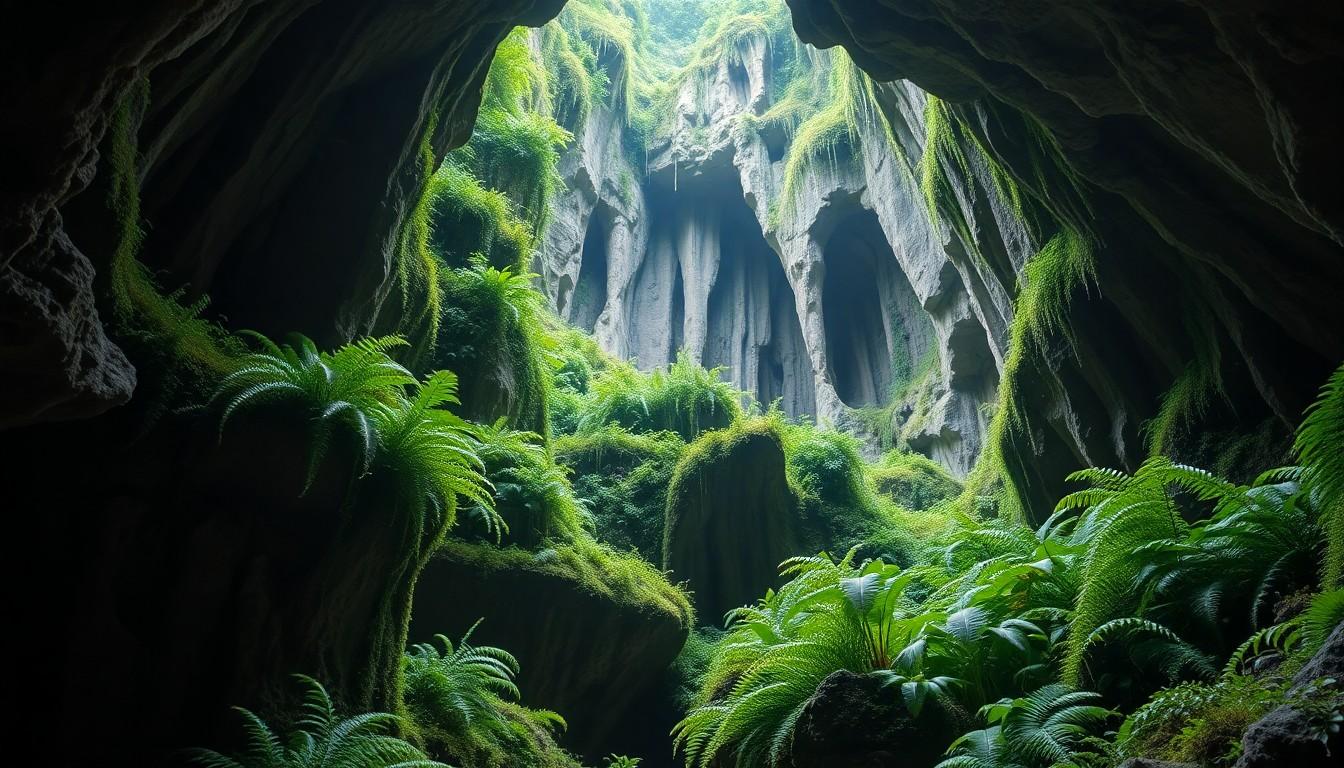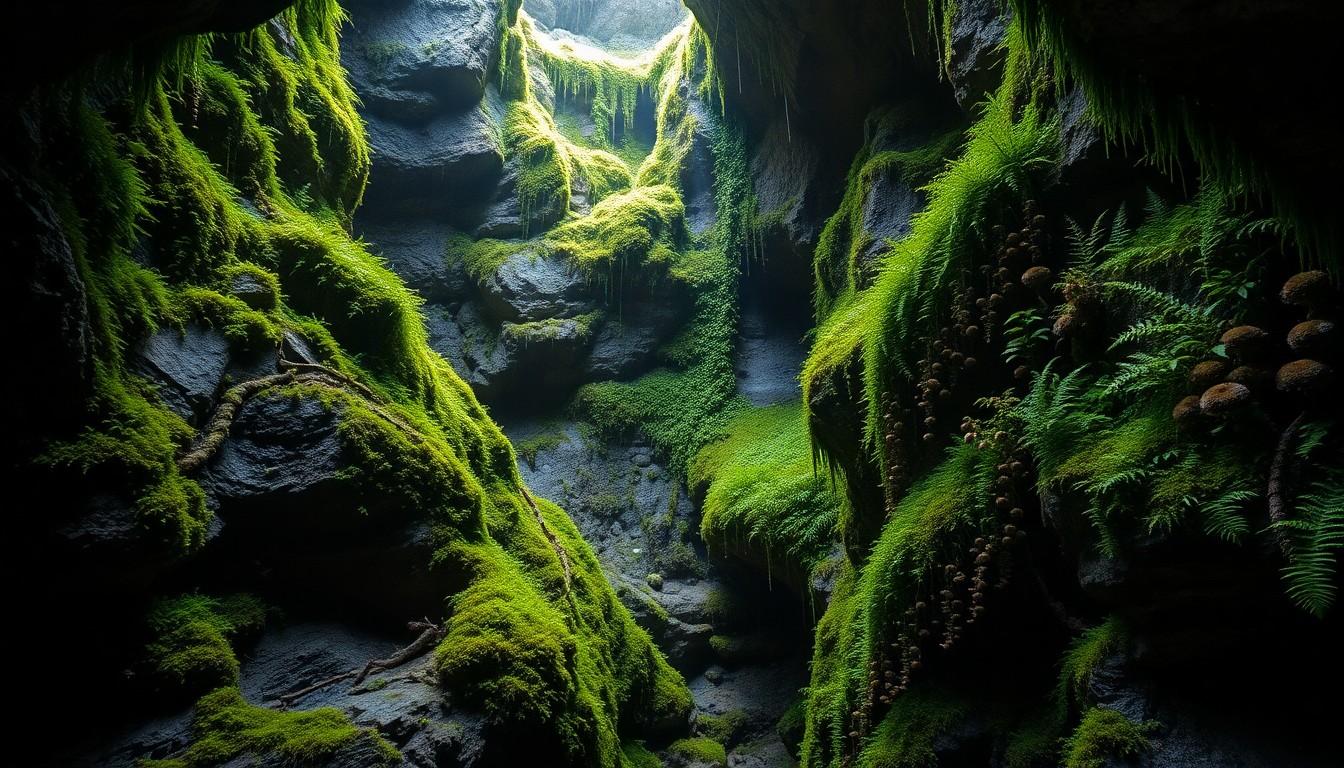Deep within the mysterious Eyegoyi caves lies a hidden world that’s anything but ordinary. While most people think of caves as dark, damp places devoid of life, these subterranean wonders host a surprising array of plant life. Imagine lush greenery thriving in the shadows, defying the odds and proving that even in the depths of the earth, nature finds a way to flourish.
From hardy ferns to unique fungi, the plants in Eyegoyi caves have adapted to their unusual environment with flair. They’re the unsung heroes of the cave ecosystem, turning a seemingly barren landscape into a vibrant tapestry of life. So, if you’ve ever wondered what kind of botanical wonders can grow in the depths of these enchanting caves, get ready to dive into a world where nature’s creativity knows no bounds.
Overview of Eyegoyi Caves
Eyegoyi Caves reveal a surprising array of biodiversity. These caves, traditionally viewed as barren, challenge that notion through their diverse ecosystems. Ferns thrive in the humid, dark environments, adapting effectively to low light conditions. Unique fungi also populate these caves, playing essential roles in nutrient cycling.
Moisture levels in Eyegoyi Caves create a conducive setting for various plant species. Shades of green from mosses and lichens contribute to the overall visual aesthetics. Roots of these plants penetrate deeper into the cave structures, ensuring stability and supporting the ecosystem’s balance.
Microclimates within the caves also impact plant growth patterns. Frequent water drips and condensation provide hydration to plant life, fostering resilience in harsh conditions. Some plants exhibit specialized adaptations like light-sensing mechanisms, enhancing their survival strategies.
Eyegoyi Caves serve as an important research site for understanding subterranean biology. Scientists study these unique plant species to comprehend their evolutionary traits and survival strategies. Preservation efforts focus on maintaining this delicate balance, ensuring that these ecosystems continue to thrive.
Natural wonders like the Eyegoyi Caves highlight nature’s adaptation capabilities. Observers marvel at how life persists in seemingly inhospitable environments, forming a vibrant ecological tapestry. With ongoing studies and exploration, the significance of these caves for biodiversity remains invaluable.
Unique Ecosystem of Eyegoyi Caves

The Eyegoyi Caves boast an intriguing blend of geological features that create distinct habitats. Rock formations shaped by centuries of mineral deposits exhibit diverse textures and compositions. A range of limestone structures provides natural shelter for various plant species. These formations foster microhabitats, enabling specific ferns and mosses to thrive in the otherwise secluded environment.
Microclimate characteristics within the caves significantly impact plant growth. High humidity levels promote lush greenery, while temperature variations contribute to the development of unique flora. Water drips and condensation regularly provide moisture, supporting diverse ecosystems. Microhabitats formed around these water sources encourage specific adaptations among plants, enhancing survival rates. Frequent fluctuations in light exposure create a range of conditions for plant growth, allowing species to maximize their potential in this underground ecosystem.
Common Plants Found in Eyegoyi Caves
Eyegoyi Caves support diverse plant life, thriving in the unique cave environment. Two prominent categories of plants found here include mosses, liverworts, fungi, and lichens.
Mosses and Liverworts
Mosses play a crucial role in this ecosystem by retaining moisture and promoting nutrient cycling. Various species can be found clinging to rocks and cave walls. Liverworts, similarly, enjoy damp conditions and form mats that stabilize soil and rock. Specific adaptations allow these plants to absorb water directly from the air. Together, mosses and liverworts contribute to the vibrancy of the cave, creating a lush green carpet that enhances biodiversity.
Fungi and Lichens
Fungi thrive in the Eyegoyi Caves, with various species breaking down organic material and recycling nutrients vital to the ecosystem. Mycorrhizal fungi establish mutualistic relationships with plant roots, facilitating nutrient exchange and enhancing plant health. Lichens, an intriguing symbiosis of fungi and algae, also flourish in the caves. They appear as colorful patches on cave surfaces and survive in minimal light. Adaptations enable both fungi and lichens to endure the cave’s unique conditions, reinforcing the ecosystem’s complexity and sustainability.
Adaptations of Cave-Dwelling Plants
Cave-dwelling plants exhibit remarkable adaptations suited for their unique environments. These adaptations help them thrive under challenging conditions.
Light and Humidity Tolerance
Plants in the Eyegoyi Caves demonstrate exceptional tolerance to low light. Many species rely on minimal light, with some utilizing photoreceptive proteins to detect available wavelengths. Humidity levels remain consistently high, allowing plants like mosses and liverworts to absorb moisture directly from the air. Consequently, these plants can survive with minimal sunlight while using humidity to their advantage. Dark, damp environments foster growth in species sensitive to light, ensuring survival in a habitat with scarce resources.
Nutrient Acquisition Strategies
Nutrient acquisition differs significantly for cave-dwelling plants. Mosses and liverworts absorb nutrients not only from the substrate but also from organic debris that accumulates in the cave. They contribute to nutrient cycling through decomposition processes, enhancing soil stability. Additionally, fungi form symbiotic relationships with plant roots, facilitating nutrient exchange. This mutualistic interaction maximizes the benefits of nutrient uptake in high-humidity conditions. Therefore, cave plants developed effective strategies that allow them to thrive in nutrient-poor environments while ensuring ecological balance.
Potential for Biodiversity
Biodiversity emerges as a significant aspect of the Eyegoyi Caves, revealing an unexpected variety of plant life. Flora, including hardy ferns and unique fungi, adapts well to the cave’s dim environment, demonstrating nature’s resilience. These plants contribute vital roles within the cave ecosystem, transforming barren spaces into thriving habitats.
Moisture levels create optimal growing conditions for numerous plant species. Shades of green from mosses and lichens enrich the cave’s aesthetics. Roots of these plants penetrate cave structures, enhancing stability and supporting ecological balance. Microclimates within the caves foster specific plant growth; consistent water drips and condensation act as hydration sources.
Geological features, including limestone formations, establish distinct habitats for diverse plant species. Humidity and temperature fluctuations influence plant development, supporting various adaptations. Microhabitats around water sources boost survival rates for flora, enabling unique species to flourish in this underground environment.
The Eyegoyi Caves host a range of plant categories, such as mosses, liverworts, fungi, and lichens. Mosses are essential for moisture retention and nutrient cycling. Liverworts create mats that stabilize soil and rock, exhibiting traits that allow water absorption directly from the air. Fungi recycle nutrients by breaking down organic material and forming relationships with plant roots, while lichens thrive in low-light conditions due to their symbiotic nature.
Cave-dwelling plants exhibit remarkable adaptations necessary for survival. Effective light tolerance comes from photoreceptive proteins that help these plants detect available wavelengths. Enhanced humidity benefits mosses and liverworts, allowing them to absorb moisture from the air directly. Unique nutrient acquisition strategies enable cave plants to derive nutrients from both their substrate and organic debris, ensuring the cave ecosystem remains dynamic and sustainable.
Eyegoyi Caves present significant research opportunities for scientists studying subterranean biology. Understanding these unique species provides insights into their evolutionary traits and survival strategies. Efforts to preserve these caves contribute to maintaining the delicate balance of their ecosystems.
Conclusion
The Eyegoyi Caves reveal a fascinating world where plant life thrives against all odds. These resilient species not only enhance the caves’ ecological diversity but also contribute significantly to their overall health. By understanding the unique adaptations of ferns, mosses, and fungi, one gains a deeper appreciation for the complexity of subterranean ecosystems.
Preserving these habitats is crucial for sustaining the intricate balance of life within the caves. As research continues to uncover the secrets of these remarkable plants, it highlights the importance of protecting such environments. The Eyegoyi Caves stand as a testament to nature’s ingenuity and resilience in the face of adversity.

